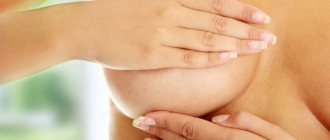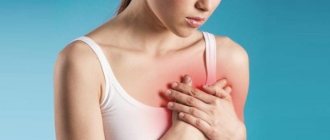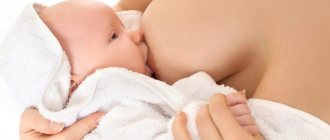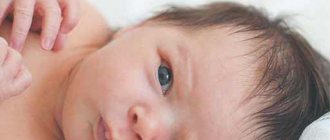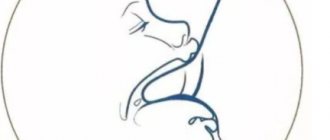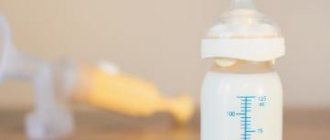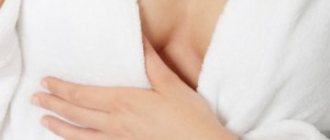23.09.2019 2715 0
What should you pay attention to?
Breastfeeding rules, webinar with a breastfeeding specialist
Breastfeeding is a natural process, and the benefits of mother's milk are invaluable for the child. However, the duration of such feeding and the health of the baby largely depend on the care of the mammary glands. This is no less important for the woman herself: in order to prevent diseases and maintain a beautiful bust shape. Preparing the breast for feeding, proper attachment, proper use of lactation accessories - all these factors are important.
Attach your baby to the breast correctly
In the first days, a newborn baby still doesn’t even really know how to suck (the sucking reflex is poorly developed in the first days), and he doesn’t even know how to properly take his mother’s breast. Your goal is to help the baby. It’s easier to teach your baby how to latch correctly right away than to re-teach it later. This will help prevent many breast problems. During the first feeding, try to place the nipple into the baby's mouth at an angle from bottom to top so that it reaches the baby's palate. The baby's mouth should also include the areola. In this position, the delicate skin of the nipple will not be injured during feeding.
correct nipple latching when feeding
We read about proper breastfeeding - And additionally, a very useful article with pictures and videos about the correct positions for breastfeeding - watch
Of course, even if applied correctly to the breast, cracks may appear on the nipples, because the skin of the nipples is very delicate. If a woman did not prepare them for future feeding before giving birth, then frequent feeding will inevitably lead to nipple injuries.
Breasts after childbirth
Young mothers have heard that the breasts need to be irrigated with water before each feeding of the child. But if you wash in the shower every day, then it is absolutely not necessary to wash your breasts separately, especially with soap. It dries out delicate skin if used too often, and this can cause the nipples to become dry and flaky, which can lead to cracking. Cracks can also occur from applying brilliant green to the nipples, as omniscient neighbors sometimes recommend.
To avoid lactostasis - stagnation of milk, a young mother needs to drink less liquid, including soups and various drinks. Otherwise, the body will produce too much milk. This is manifested by swelling and hardening of the glands, a feeling of fullness with milk, and sometimes an increase in temperature. If an infection gets into the mammary glands, mastitis develops, then you will have to resort to medical help.
To prevent this from happening, you need to monitor the condition of your breasts. In the case when the feeling of her being full of milk does not disappear even after feeding, lightly massage her with gentle movements towards the center. Then express the milk that remains in your breasts until you feel relief in your glands.
Mastitis is caused by cracked nipples, which appear due to various factors. This includes improper latching of the baby to the breast and treatment of the nipples with alcohol-containing preparations that dry out the delicate skin. Pay attention to how your baby eats. The way he takes the breast is important: the child must grasp with his mouth not only the nipple itself, but also the areola. If the mother experiences discomfort and pain while feeding, then most likely the feeding technique is impaired.
Another reason for the formation of cracked nipples can be improper weaning of the baby from the breast. You should not tear it off suddenly while sucking, as this can injure the delicate skin of the nipple. It is best to gently insert your finger between the child’s gums and unclench them, then the nipple will come out of his mouth on its own.
Cracks that appear can be treated with pharmaceutical preparations - “Purelan”, “Bepanten”, which is done after feeding. To avoid cracks in your nipples, lubricate them with breast milk by squeezing out a small amount and spreading it over the nipple and areola. The active substances found in milk help soften the nipple and prevent the formation of various inflammations on it.
Breast care for cracked nipples
Have cracks appeared on your nipple yet? Don't worry, everything can be fixed.
- Carefully wash your breasts after each feeding with warm water (without using soap or other detergents), dry with a soft towel and lubricate with a special cream (Bepanten cream helps). You can wash the cracks with your milk, it has the properties of destroying bacteria.
- After feeding, do air baths for your breasts. Their benefits are enormous; they allow the skin to rest and “breathe.” The duration of the procedure is 10–20 minutes.
- Are your nipples severely inflamed and is the pain during feeding difficult to bear? Use special silicone nipple covers. They are soft and the baby suckles without difficulty. It is important to choose the right size. It should match the size of your nipple. Otherwise, the baby will refuse to take the breast with the pad.
Reading about breast problems:
breast pain when feeding
About cracked nipples, how to feed with cracks, how to treat them, prevention
Breast disease - mastitis (symptoms, treatment)
An article about symptoms and treatment with folk methods of lactostasis at this link
We recommend watching a video about problems with breastfeeding:
Basic rules of care
- Maintain breast and nipple hygiene, but do not overdo it. It is enough to wash your breasts twice a day with clean warm and then cool water. Periodically use liquid neutral soap;
- After washing, do not dry your breasts with a towel, but take soft napkins or paper towels;
- Choose a comfortable and safe bra that does not squeeze your breasts or rub your nipples;
- Use special bra pads that will absorb excess milk;
- If you use pads in your nursing bra, replace the pads promptly;
- Put your baby to the breast correctly and regularly, follow a rational feeding regimen;
- Monitor and maintain a comfortable nipple condition. You can periodically wipe them with pieces of ice;
- For healthy creams, you don't need to use different creams. Such products are used only when abrasions and cracks appear. For prevention, you can lightly lubricate your nipples with breast milk before or after feeding;
- Do a light breast massage daily;
- Express milk correctly. To express breast milk painlessly and easily, it is better to use the manual method and change the mammary glands every five minutes during the process;
- Do not pull, pull or squeeze your nipples while feeding or pumping! Do not squeeze the breast skin! Do not wrap your chest with bandages!;
- Air baths and hardening are excellent methods for maintaining the health of female breasts and promoting lactation. To do this, walk around with your chest open for 10-15 minutes every day, then rinse your skin with warm water, cool water and finally cold water. Reduce the water temperature gradually!;
- Regularly examine the mammary glands for lumps, nodules, and various formations. If you notice any abnormalities, consult a doctor!

Breast hygiene
After childbirth, women's breasts swell greatly from the flow of milk. They need support. It is important to choose a quality bra. It should be comfortable, elastic, made of natural fabric, without underwires, with wide straps. Such a bra will help avoid stretch marks, protect the breasts from injury, ensure optimal blood circulation and milk flow, and remove excess stress from the spine. It is advisable to have several bras (at least two) to change them daily. If milk leaks from your breasts, you can put special pads in your bra cups or make them yourself from 8 to 10 layers of sterile bandage.
Daily breast massage and taking a contrast shower will help improve blood circulation in the mammary glands and avoid stretch marks. Massage your breasts with water jets in a clockwise motion with warm and cool water alternately. After taking a shower, wipe your breasts with a towel using movements from the nipple to the armpit. Wear special supportive tops at night.
To keep your mammary glands in shape, do special exercises to strengthen your breasts. Here are some exercises. Repeat each at least 20 times.
- Clasp your hands in front of your chest, palms facing each other, as if in supplication. Squeeze your palms tightly for a few seconds, then release.
- Stand up straight, place your hands on your waist. As you rise onto your toes, move your elbows back as far as possible.
- Take an expander or a tight, wide elastic band about 50 cm long. Raise your arms above your head, stretch the elastic band, and hold it taut for ten seconds.
- Push-ups (from the floor or a chair) also help strengthen the muscles that support the chest.
Take a look at our section “After childbirth (for mom)” where you will find
Why should you breastfeed?
The most useful and ideal nutrition for a newborn is breast milk, which ensures the best development of the baby. Nature has provided the composition of breast milk, which is ideal for newborns; it contains proteins, which include essential amino acids, fats, carbohydrates, microelements, vitamins, contained in the right quantities and easily absorbed by the baby’s body. It also contains immune proteins and leukocytes, with the help of which the body’s resistance to diseases increases, since infants have underdeveloped immunity.
Breast milk has an optimal temperature, is sterile and is ready for consumption at any time, anywhere. Breastfeeding provides emotional contact between mother and child and the development of maternal instinct. When sucking on a breast that is elastic and soft, the child’s bite is formed correctly. For problems that develop during the eruption of baby teeth, breast milk helps relieve symptoms. It is also known that children who were fed breast milk are less predisposed to various diseases at an older age, compared to children who were fed artificially (infant formula). Therefore, in order to achieve the best result in the development of the child, the development of immunity, it is necessary to use breastfeeding for as long as possible, at least one year.
What to do if your breasts are very swollen and painful?
[sc:ads]
On the third or fourth day after birth, milk “comes” to the mammary glands. To avoid sudden milk flows and severe breast swelling, limit drinking and liquid foods during this time. Have you received a lot of milk, are your breasts hard, do they hurt? Feed your baby more often (according to each requirement). The baby will suck the excess milk. You can gently knead your breasts with your hands and express excess milk until your breasts are soft. Is it difficult to do it yourself? Ask your husband or relative to help you pump.
- How to express with your hands
- How to express with a breast pump (how to choose a breast pump)
Having trouble softening your breasts? Turn to folk remedies. A honey cake applied to the chest (take a tablespoon of flour, honey and water), a compress of sour cottage cheese, softened cabbage leaves will help. Apply the compress or cake only to the gland area, leaving the nipple open. Be sure to consult your doctor.
Recently, it has been recognized that the breasts of a woman who has fed a baby have a more beautiful shape than those who have not breastfed. Take care of your breasts, take care of them, and don’t be lazy to do gymnastics every day to strengthen them. This will help your breasts quickly regain their strength and elasticity after finishing breastfeeding.
[sc:rsa]
Read more
- Advice for a nursing mother (about proper breastfeeding. Useful tips, + a lot of videos)
- Video gallery on the topic of GW
Visit to a mammologist
During breastfeeding, a woman may experience stagnation of milk or cracked nipples. All these problems can be solved by going to the doctor. If a nursing mother has no signs of pathology, then a visit to a mammologist can be postponed until the end of breastfeeding. Otherwise, you should immediately contact a specialist. Causes for concern may include:

- The appearance of cracks in the nipples.
- Unpleasant sensations in the sternum.
- Presence of lumps during breast self-examination.
- Presence of breast problems even before the baby is born.
- Chest pain with fever.
In this case, the doctor may order an x-ray of the mammary glands. If the pictures do not show anything wrong, then a follow-up visit should be made after six months; if there are complications, the specialist will prescribe the appropriate medications and independently determine the time of the return appointment.
For preventive purposes, women over 35 undergo mammography once a year. Until this age, the X-ray procedure is carried out only under special instructions; its analogue is ultrasound.
What contributes to sagging - video
Find out why breasts sag and how long you need to feed your baby in order to achieve a speedy recovery after cessation of lactation.
Breast enlargement is one of the first signs of early pregnancy. There is no escape from this. And in order to quickly restore the shape and size of the mammary glands, you need to pay a little attention to them.
What are you doing to speed up breast recovery? Share your secrets in the comments.
Diet and hygiene of a nursing mother
A nursing mother must maintain body hygiene (take a shower every day, rinsing her breasts with clean water), wear clean underwear, and wash her hands with soap before each feeding. Before each feeding, you need to express a few drops of milk to remove any germs that may have gotten from your clothes.
A woman who is breastfeeding should not smoke, drink alcohol, drugs, strong tea, coffee, and, if possible, medications.
A nursing mother is recommended to take frequent walks with her baby in the fresh air, frequent rest and naps during the day. Follow your diet, avoid any diets, and drink plenty of fluids. The diet should include foods rich in vitamins (vegetables and fruits), iron (found in meat, it is better to eat veal), foods rich in calcium (dairy products), rich in phosphorus (fish). Use red vegetables and fruits (tomatoes, strawberries and others) and eggs with caution, as they can cause allergies in a child. Eliminate citrus fruits from your diet, they also cause allergies. Products containing vegetable fiber (peas, beans) should also be excluded, as they lead to bloating in the baby. Garlic, onions, and seasonings can spoil the taste of milk.
Exercises for female breasts
- Place your palms in front of you and press them against each other for 10-15 seconds, creating tension in the armpits.
- Clench your palms into fists, straighten your arms in front of you, and begin the “scissors” exercise.
- Take dumbbells in your hands, slowly lift them in front of you and lower them down, spreading your arms to your sides.
- Clench your palms into fists, go to the wall and rest your hands on it. Press on the wall for 10-15 seconds, as if you were trying to move it.
- Place your hands in a “lock” at the back of your head and try to bring your elbows together in front of you.
Each of these exercises should be done 10-20 times. Over time, the number of repetitions can be increased.
Recipes for making homemade masks for women's breasts

If you don’t want to buy special cosmetics for caring for women’s breasts, then you can always make a good product at home using the most simple products.
Oatmeal mask
Take oatmeal and sour cream in equal proportions. Steam the flour with boiling water and leave to cool. Then mix together with sour cream and apply to the skin of the chest, leave for 20 minutes, and then rinse with warm water.
Curd and cream mask
You will need full-fat cottage cheese, heavy cream, and half an orange. Mix cream and cottage cheese in half, add orange juice. This mask should be applied in layers as soon as the previous one dries.
Clay lifting mask
Fat milk in the amount of 70-85 ml must be slightly warmed. Next, dilute 30-45 g of clay in it, add a few drops of orange or lavender essential oil, and mix everything together. Cover the surface of the breast with the resulting product, avoiding the areola and nipples. Rinse off after 15-25 minutes, apply any nourishing cream.
Cosmetic ice
You can easily prepare an excellent product at home that is indispensable in breast skin care. To do this, you need to brew calendula flowers, chamomile flowers, sage leaves, and mint leaves separately or all together. Pour the resulting broth into ice cube trays. Wipe your chest with these herbal cubes after taking a bath or visiting a sauna. However, do not get carried away too much, so as not to chill your bust.

